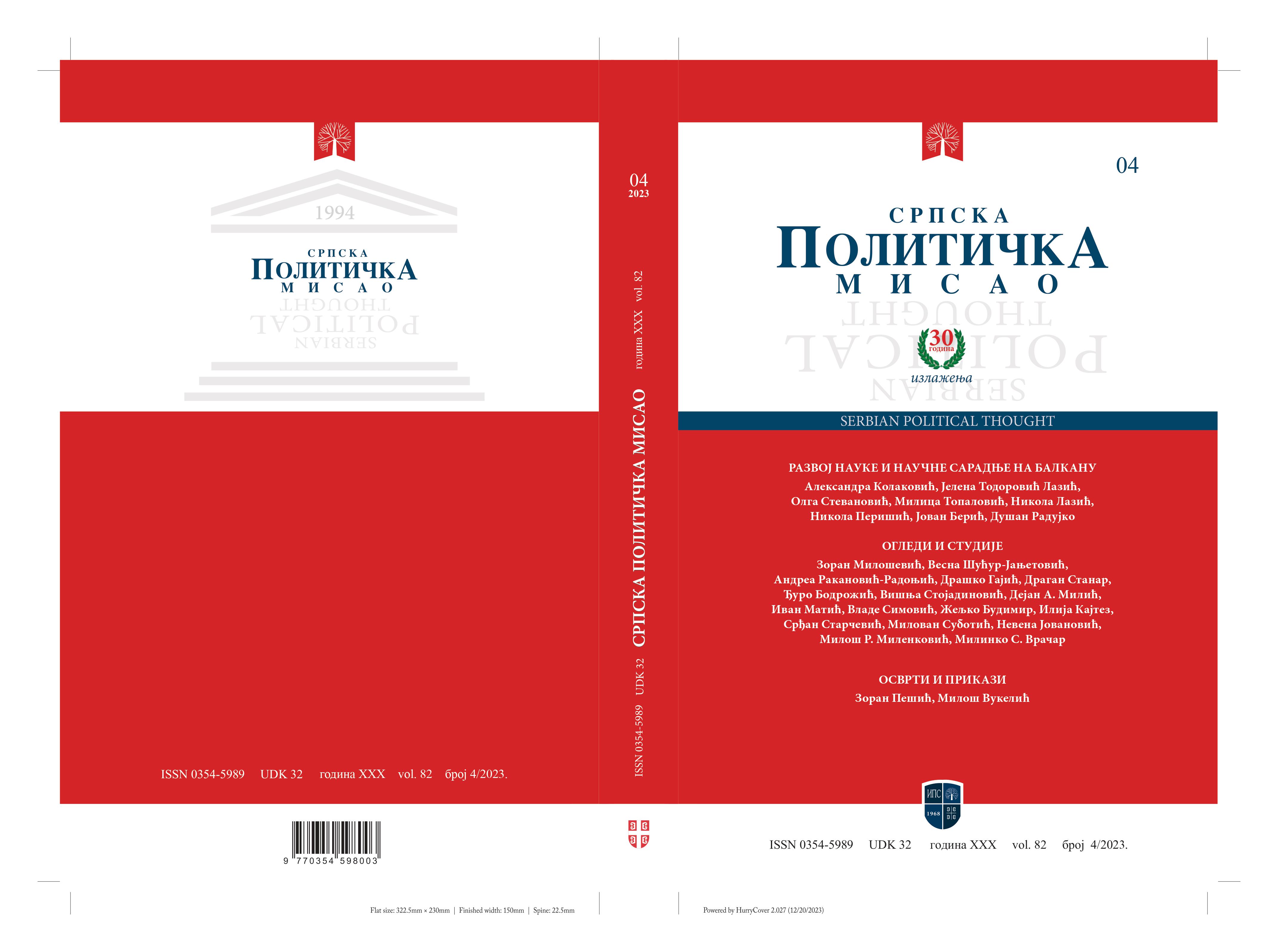SARAJEVO IN THE PROCRUSTEAN BED
“SIEGE” OF A DIVIDED CITY
Abstract
In this paper author aims to explain how constructed narratives condition the use of certain notions examining the (mis)use of the notion “siege” in the case of Sarajevo during the war in Bosnia and Herzegovina from 1992 to 1995. Conceptual analysis of the notion “siege” enables identification of essential features of this notion, which then in effect determine its logical scope and reach of usage. By analyzing the case of Sarajevo, author proves that events in this city did not reflect essential features of the notion “siege” and that therefore war-time Sarajevo does not fall in the logical reach of that notion, but rather of a “divided city”. In conclusion, author explains that mainstream media, academia, and many officials have been insisting on using the notion “siege” because it is the only notion that fits the preconstructed narrative aiming to explain the war in Bosnia and Herzegovina.
References
Ajnadžić, Nedžad. 2002. Odbrana Sarajeva [Defense of Sarajevo]. Sarajevo: Sedam.
Andreas, Peter. 2008. Blue Helmets and Black Markets: The Business of Survival in the Siege of Sarajevo. Ithaca and London: Cornell University Press.
Antić, Čedomir, Nenad Kecmanović. 2016. Istorija Republike Srpske [History of the Republic of Srpska]. Beograd: Nedeljnik.
Babić, Jovan. 2018. Ogledi o odbrani [Reflections on Defense]. Beograd: Službeni glasnik.
Bachrach, S. Bernard. 1994. “Medieval Siege Warfare: A Reconnaissance”. The Journal of Military History 58 (1): 119-133.
Carriger, S. Michael. 2010. “Narrative vs. PowerPoint: For Leaders, It May Not Be a Matter of Fact”. Strategy and Leadership 38 (2): 52-56. doi: 10.1108/10878571011029064
Cekić, Nenad. 2013. Metaetika [Metaethics]. Beograd: Akademska knjiga.
Concluding Report of the Independent International Commission of Inquiry of the suffering of Serbs in Sarajevo Between 1991 to 1995. “Independent International Commission of Inquiry on Suffering of Serbs in Sarajevo between 1991 and 1995”. 2020.
Corwin, Philip. 2000. Dubious Mandate. London: Duke University Press.
Czuperski, Maksymilian, Faysal Itani, Ben Nimmo, Eliot Higgins and Emma Beals. 2017. Breaking Aleppo: Siege. Washington: Atlantic Council.
Fox, Amos. 2021. “On Sieges”. The RUSI Journal, 166 (2): 18-28. doi: 10.1080/03071847.2021.1924077
Hill, Steven, Francoise Hampson and Sean Watts. 2015. “Can Siege Warfare Still be Legal?” In Proceedings of the Bruges Colloquium: Urban Warfare, Collegium, 46: 89-108.
http://www.statistika.ba/?show=12&id=19000, (accessed January 9th, 2022)
Lučarević, Kerim. 2000. Bitka za Sarajevo: osuđeni na pobjedu [Battle for Sarajevo: Destined to Win]. Sarajevo: TZU.
Margiotta, D. Franklin. 2000. Brassey’s Encyclopedia of Land Forces and Warfare. Sterling: Brassey’s.
Mileham, Patrick. 2022. “‘One damned thing after another’: Battle of narratives and urban-war chaos”. In Urban Warfare, eds. Dragan Stanar and Kristina Tonn, 7-26. Leiden: Brill Nijhoff.
Mladenović, Ivan. 2009. „Serlovo shvatanje institucionalne realnosti“ [Searle’s conception of institutional reality]. Filozofija i društvo, 20 (3): 185-198. doi: 10.2298/FID0903185M
Neisser, Joseph. 2015. The Science of Subjectivity. Basingstoke: Palgrave MacMillan.
Nijs, Maxime. 2020. “Humanizing siege warfare: Applying the principle of proportionality to sieges”. International Review of the Red Cross, 102 (914): 683-704. doi: 10.1017/S1816383121000680
“Official Gazette of Republika Srpska”, No. 02. 1992.
Petrović, Gajo. 2011. Logika [Logics]. Beograd: Zavod za udžbenike.
Ristić, Mirjana. 2014. ”’Sniper Alley’: The Politics of Urban Violence in the Besieged Sarajevo”. Built Environment – ‘Urban Violence’, 40 (3): 342-356.
Rouz, Majkl. 2001. Misija u Bosni: borba za mir [Fighting for Peace: Lessons from Bosnia]. Beograd: Tetra.
Schindler, R. John. 2007. Unholy Terror: Bosnia, Al-Qa’ida, and the Rise of Global Jihad. St. Paul: Zenith Press.
Schulte, Paul. 2012. “Morality and War”. In The Oxford Handbook of War, eds. Julian Lindley-French and Yves Boyer, 99-115. Oxford: Oxford University Press.
Searle, R. John. 1995. The Construction of Social Reality. New York: The Free Press.
Shenhav, R. Shaul. 2006. “Political Narratives and Political Reality”. International Political Science Review, 27 (3): 245-262. doi: 10.1177/0192512106064474
Sontag, Susan. 1994. “Waiting for Godot in Sarajevo”. Performing Arts Journal, 16 (2): 87-106. doi: 10.2307/3245764
Stanar, Dragan. 2021. “Dijalog, izgradnja poverenja i pomirenje posle oružanih sukoba“[Dialogue, trust building and reconciliation after armed conflicts]. U Nacionalni identitet i tolernacija [National identity and tolerance], ur. V. Talović, 39-43. Beograd: Centar za strateške prognoze.
UN Report, “UN Security Council”, 1994f, Annex IV, Part IV. 1994.
Vidanović, Đorđe. 2009. „Poimanje realnosti kod Džona Serla: struktura sveta i društvene činjenice“ [Understanding reality in John Searle’s work: the structure of the world and social facts]. Teme, 33 (4): 1157-1167.
von Clausewitz, Carl. 2007. On War. Oxford: Oxford University Press.

